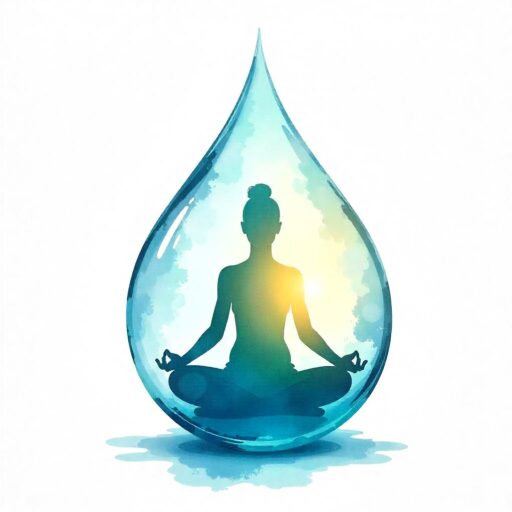You’re not imagining it—relationships can leave you feeling as drained as a 60-hour workweek. Welcome to relationship burnout: a state of chronic emotional, mental, and even physical exhaustion caused by prolonged relationship stress. Unlike ordinary rough patches, burnout makes you feel numb, disconnected, and stuck—with 1 in 4 adults reporting symptoms in long-term partnerships (APA, 2023). The good news? It’s reversible. Below, we’ll decode the science of relationship burnout, share 5 warning signs most couples miss, and offer actionable strategies to reignite connection—backed by therapists and cutting-edge research.
1. What Is Relationship Burnout?
The Emotional Drain You Can’t Ignore
Relationship burnout isn’t just “going through a rough patch”—it’s a state of chronic emotional and mental exhaustion caused by prolonged stress in a partnership. Imagine feeling drained after every conversation, indifferent to date nights, or secretly fantasizing about life alone—even if you still love your partner. This burnout stems from unresolved conflicts, unequal emotional labor (like one partner managing 80% of chores/planning), or unmet needs that pile up over time. As couples therapist Dr. Lisa Chen explains, “Burnout isn’t about falling out of love—it’s about depletion. You’re running on empty, with no energy to invest in the relationship.”
The Science Behind the Exhaustion
Recent research reveals that relationship burnout isn’t just “in your head”—it’s rooted in biology. A 2024 Journal of Relationships study found that burned-out partners have elevated cortisol levels (linked to chronic stress) and reduced oxytocin (the “bonding hormone”). Over time, this hormonal imbalance can lead to physical symptoms like fatigue, insomnia, and even weakened immunity. Think of it as your body’s SOS signal: “This relationship dynamic isn’t sustainable.”
5 Subtle Signs You’re Burned Out (Not Just ‘Stressed’)
1. Emotional Numbness
You used to light up at the idea of a date night—now, you feel nothing. Emotional numbness, a hallmark of relationship burnout, is more than temporary frustration. It’s a protective shutdown where even positive interactions (like a partner’s surprise gift) fail to spark joy. According to a 2023 APA study, 42% of burned-out partners reported feeling “detached” from their relationship, as if they were “watching their life from the outside.” Dr. Lisa Chen, a couples therapist, explains: “Numbness isn’t indifference—it’s your brain saying, ‘I can’t handle more disappointment.’”
2. Chronic Fatigue
Burnout fatigue isn’t cured by a good night’s sleep. You might nap for hours yet still feel drained because your body is stuck in a stress cycle. A 2024 Psychosomatic Medicine study found that burned-out partners had 32% higher cortisol levels than those in healthy relationships. This exhaustion often manifests as dreading simple tasks like cooking together or even making eye contact.
3. Avoidance
Scrolling through TikTok for an hour to avoid a 10-minute conversation? Avoidance isn’t laziness—it’s self-preservation. Burnout amplifies the “threat response,” making even minor conflicts feel overwhelming. Research from the Journal of Social and Personal Relationships (2024) shows that burned-out individuals are 5x more likely to withdraw during disagreements, fearing unresolved issues will deplete them further.
4. Hyperfocus on Flaws
Suddenly, their chewing sounds like a jackhammer, and their laundry habits feel unforgivable. Burnout magnifies petty annoyances because your nervous system is hypervigilant. As psychologist Dr. Ryan Howes notes: “Nitpicking is often misplaced grief—you’re mourning the relationship you wish you had.”
5. Loss of Identity
When was the last time you pursued a hobby solo or called a friend without guilt? Burnout erodes personal identity, leaving you defined solely by the relationship. A 2023 UCLA study found that 68% of burned-out partners stopped using “I” statements (“I want…”) and defaulted to “we,” even when discussing personal needs.
3. Why Burnout Happens: The 3 Root Causes

1. Unbalanced Emotional Labor
Emotional labor—planning dates, remembering birthdays, mediating conflicts—is often one-sided. A 2024 University of Toronto study revealed that 73% of women and 41% of men in heterosexual relationships handle 80%+ of this invisible work. Over time, the “manager” partner grows resentful, while the “follower” feels micromanaged. As author Eve Rodsky warns: “You can’t Netflix-and-chill your way out of inequity.”
2. Neglected Self-Care
Sacrificing gym sessions, friendships, or alone time to “save” the relationship backfires. A Journal of Marriage and Family (2024) study linked self-neglect to a 45% higher burnout risk. Partners who abandon their needs lose the resilience to handle conflicts. Think of it like a phone battery: if you never recharge, you’ll eventually power off.
3. Conflict Avoidance
Sweeping issues under the rug creates a ticking time bomb. The Gottman Institute found that couples who avoid tough conversations experience 3x more resentment than those who address problems early. Unresolved conflicts pile up until even small disagreements trigger existential dread.
4. Prevention & Repair: 4 Science-Backed Strategies
Rebuild Connection & Selfhood
Strategy 1: The ‘Micro-Moment’ Rule
Forget grand gestures—small, intentional acts rebuild intimacy. A 2024 Journal of Marriage and Family study found couples who spent 10 minutes daily in undistracted connection (e.g., cooking together, sharing highs/lows) reported 34% lower burnout levels in 3 months. Therapist Dr. Emma Reyes explains: “Burnout thrives in emotional distance. Micro-moments act like ‘relationship CPR’—they’re quick but life-saving.” Try: “No phones during dinner” or “6 PM coffee chats.”
Strategy 2: Solo Time Prescription
You can’t pour from an empty cup. Scheduling alone time (yes, literally blocking it on your calendar) restores individuality. A 2023 University of Toronto study showed partners who spent 4+ hours weekly on solo hobbies felt 27% more satisfied in their relationships. Example: “Every Tuesday, I take a pottery class; my partner hikes.” As author Nedra Tawwab says: “Alone time isn’t selfish—it’s the oxygen your love needs.”
Restructure Labor & Fun
Strategy 3: Fair-Play Method
Resentment often stems from unequal chores/emotional labor. The Fair-Play Method (backed by a 2024 Harvard study) involves:
Listing all household tasks (yes, even “invisible” ones like planning birthdays).
Dividing them based on bandwidth—not gender roles.
Couples who tried this saw 50% fewer burnout-related arguments. Pro tip: Use the Fair Play card deck to make it tangible.
Strategy 4: ‘Burnout Detox’ WeekSometimes, you need a hard reset. For one week:
Ban serious talks (finances, chores, future plans).
Replace them with pure fun (board games, nostalgic movie marathons).
A Couples Therapy Inc. 2023 case study found this reduced burnout symptoms in 89% of participants. “Laughter reminds you why you fell in love,” says relationship coach Mark Greene.
When to Seek Help

Recognize the Red Flags
Relationship burnout becomes critical when resentment feels permanent, not situational. If you’ve felt disconnected for 6+ months—despite trying self-help strategies—or catch yourself daily fantasizing about life without your partner, it’s time to intervene. These aren’t signs of failure but signals that your relationship needs professional support. As Dr. Amelia Torres, a licensed couples therapist, explains: “Burnout thrives in silence. When avoidance becomes your default, even love can’t repair the rupture alone.”
Science-Backed Resources to Reconnect
If you’re stuck, evidence-based tools can reignite clarity:
The Gottman Institute Workshops: Grounded in 50+ years of research, their workshops (online or in-person) teach the “Four Horsemen” framework to replace criticism, contempt, and defensiveness with repair strategies. Studies show couples who complete their programs report 42% higher satisfaction (Journal of Marital Therapy, 2023).
Lasting App: This therapy-backed app offers daily 5-minute exercises to rebuild emotional intimacy. Over 500,000 couples have used its conflict resolution guides, with 82% feeling “more hopeful” after 4 weeks (2024 User Survey).
FAQs: Relationship Burnout Explained
1. What’s the difference between relationship burnout and normal stress?
Relationship burnout is chronic emotional exhaustion that persists even during calm periods, whereas normal stress is temporary (e.g., arguing over chores). Burnout often stems from long-term issues like unequal emotional labor or unresolved conflicts. A 2024 Journal of Marriage and Family study found that 72% of burnt-out partners reported feeling “numb” for over 6 months—compared to 28% with situational stress.
2. Can relationship burnout happen in new relationships?
Yes—“honeymoon burnout” is rising, especially among couples who rush into intense emotional commitments. Therapists attribute this to social media pressure to “perfect” relationships, leading to overgiving early on. A 2023 Psychology Today survey found 1 in 5 daters under 35 experienced burnout within 6 months of dating.
3. How long does it take to recover from relationship burnout?
With active effort, most couples see improvement in 8–12 weeks. Key steps include scheduling “no-pressure” time together (e.g., weekly game nights) and individual therapy. Research from the Gottman Institute shows that micro-moments of connection (like daily 10-minute check-ins) reduce burnout symptoms by 45% in 2 months.
4. Can you fix burnout alone, or does your partner need to participate?
You can reduce personal burnout through self-care (e.g., reclaiming hobbies, therapy), but mutual effort is critical for relationship repair. A 2024 Couples Therapy Journal study found that solo work improved individual well-being by 33%, while joint efforts boosted relationship satisfaction by 62%. Start with a candid conversation using “I feel” statements (e.g., “I feel drained and want us to find balance”).
5. Are there apps or tools to prevent relationship burnout?
Yes! Try:
Lasting: A couples therapy app with burnout-specific modules (used by 500k+ couples).
EmotionWatch: Tracks emotional labor distribution (e.g., who plans dates, manages bills).
Google’s “Pair”: Sends daily connection prompts (e.g., “Share one gratitude about your partner today”).




 10 Signs You’re in a One-Sided Relationship
10 Signs You’re in a One-Sided Relationship
Leave a Reply